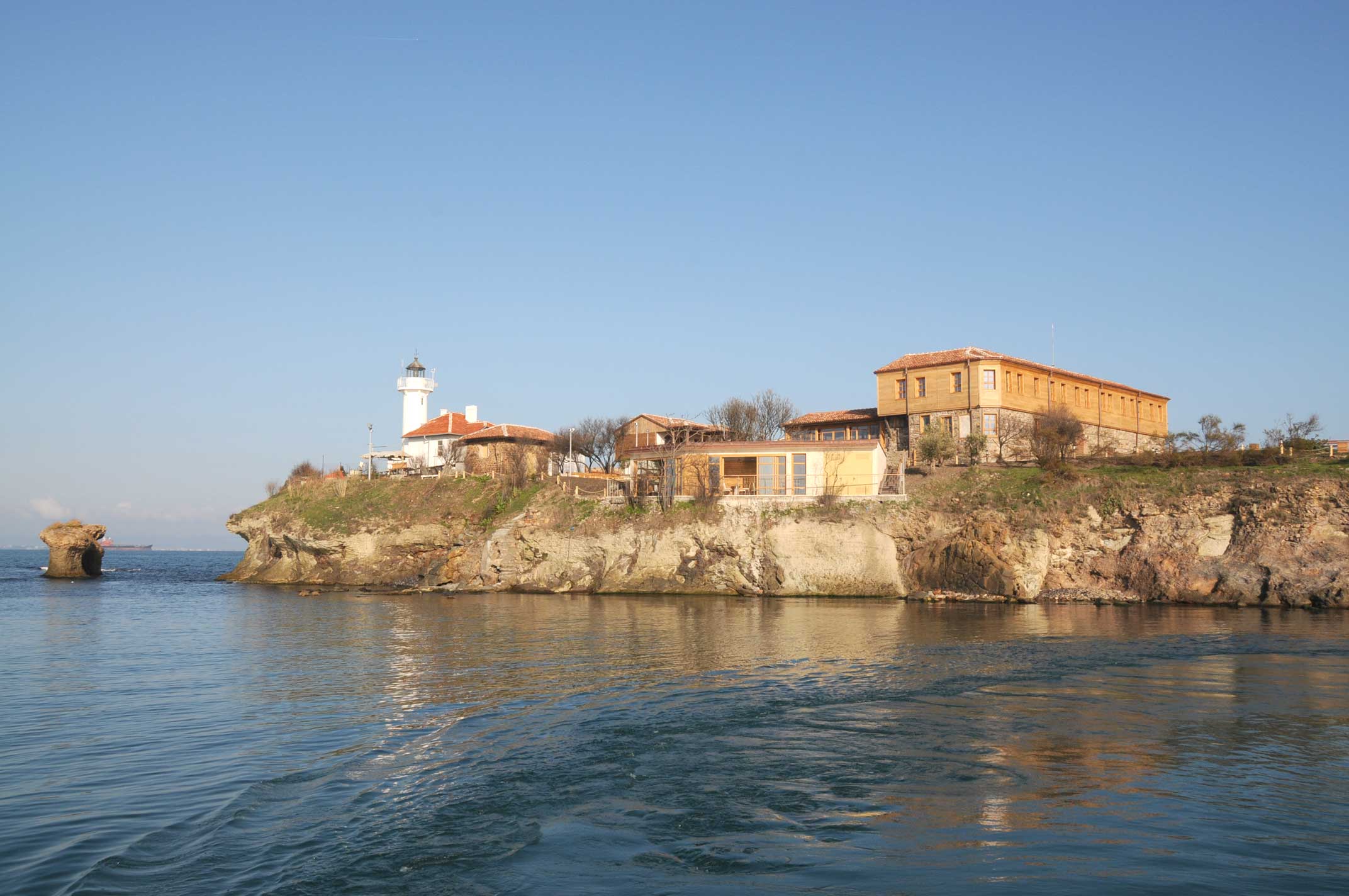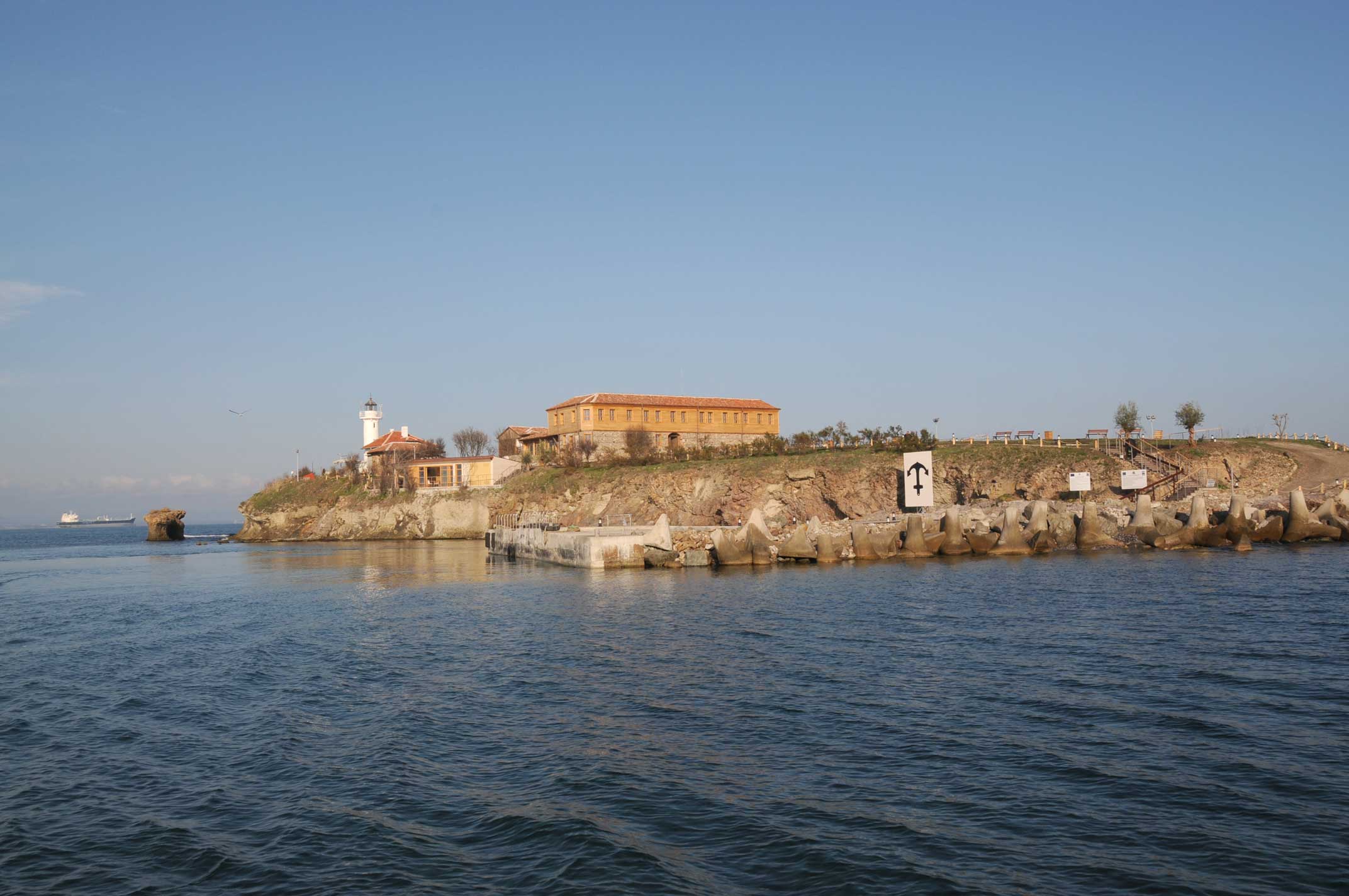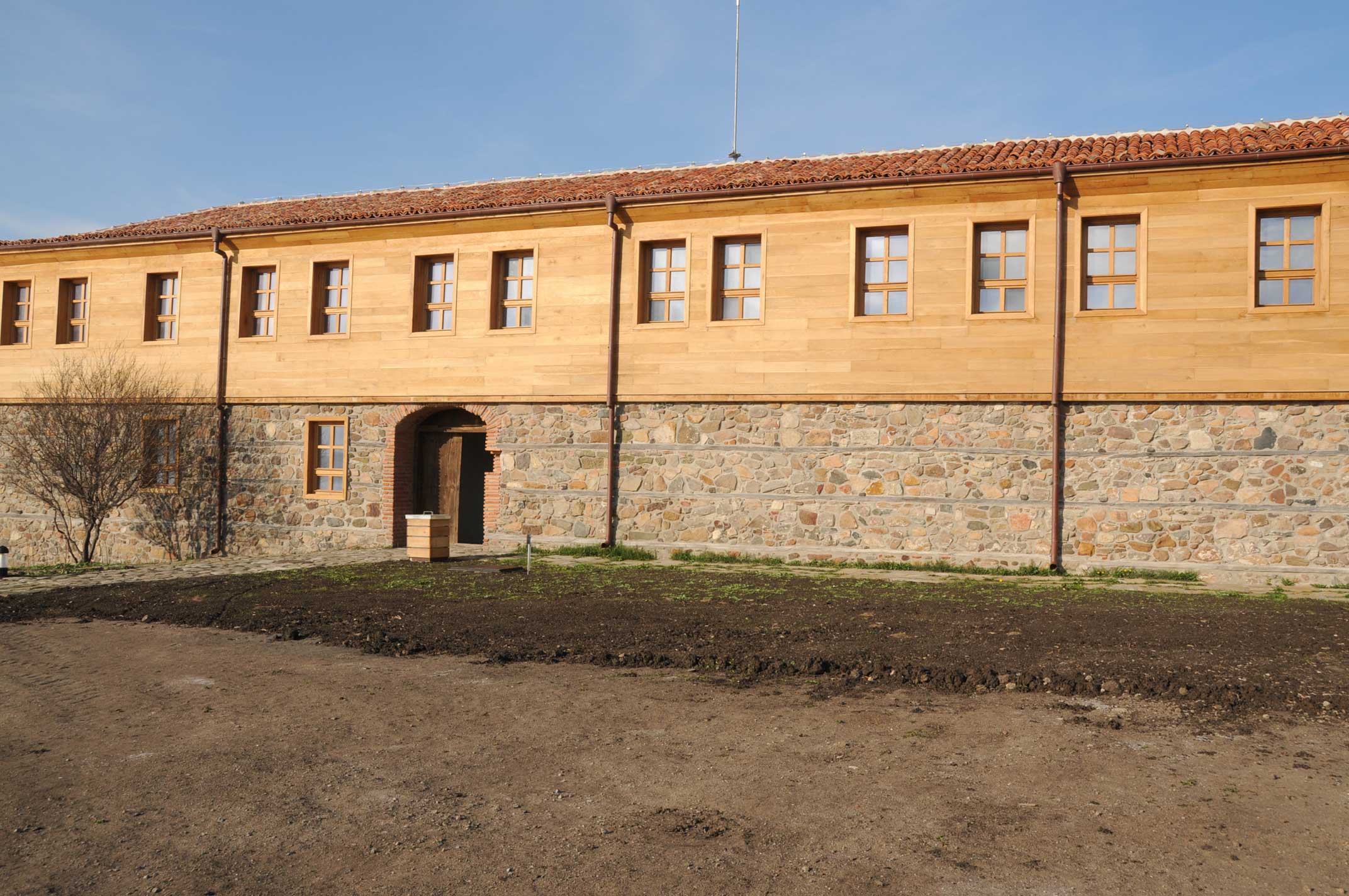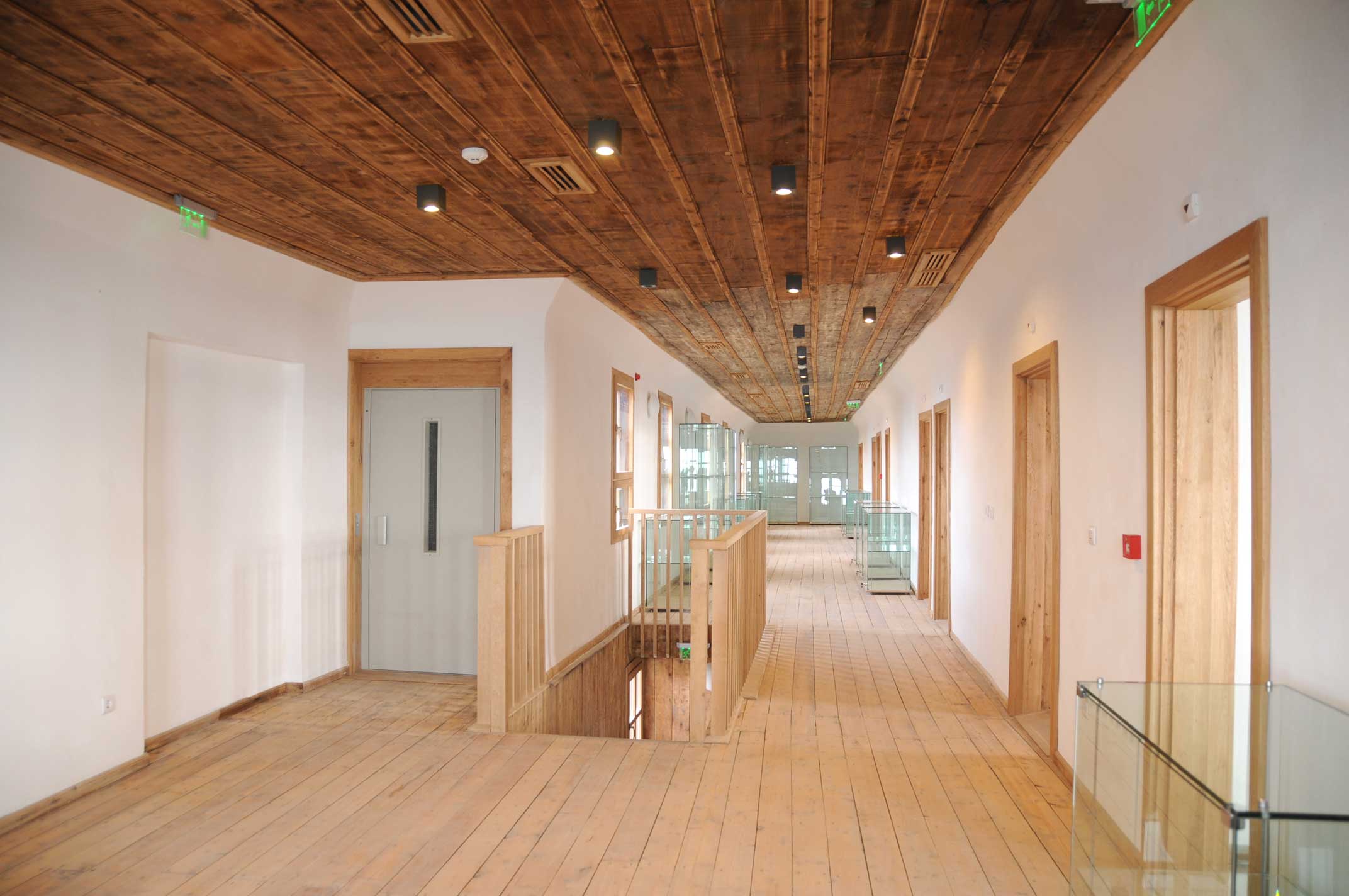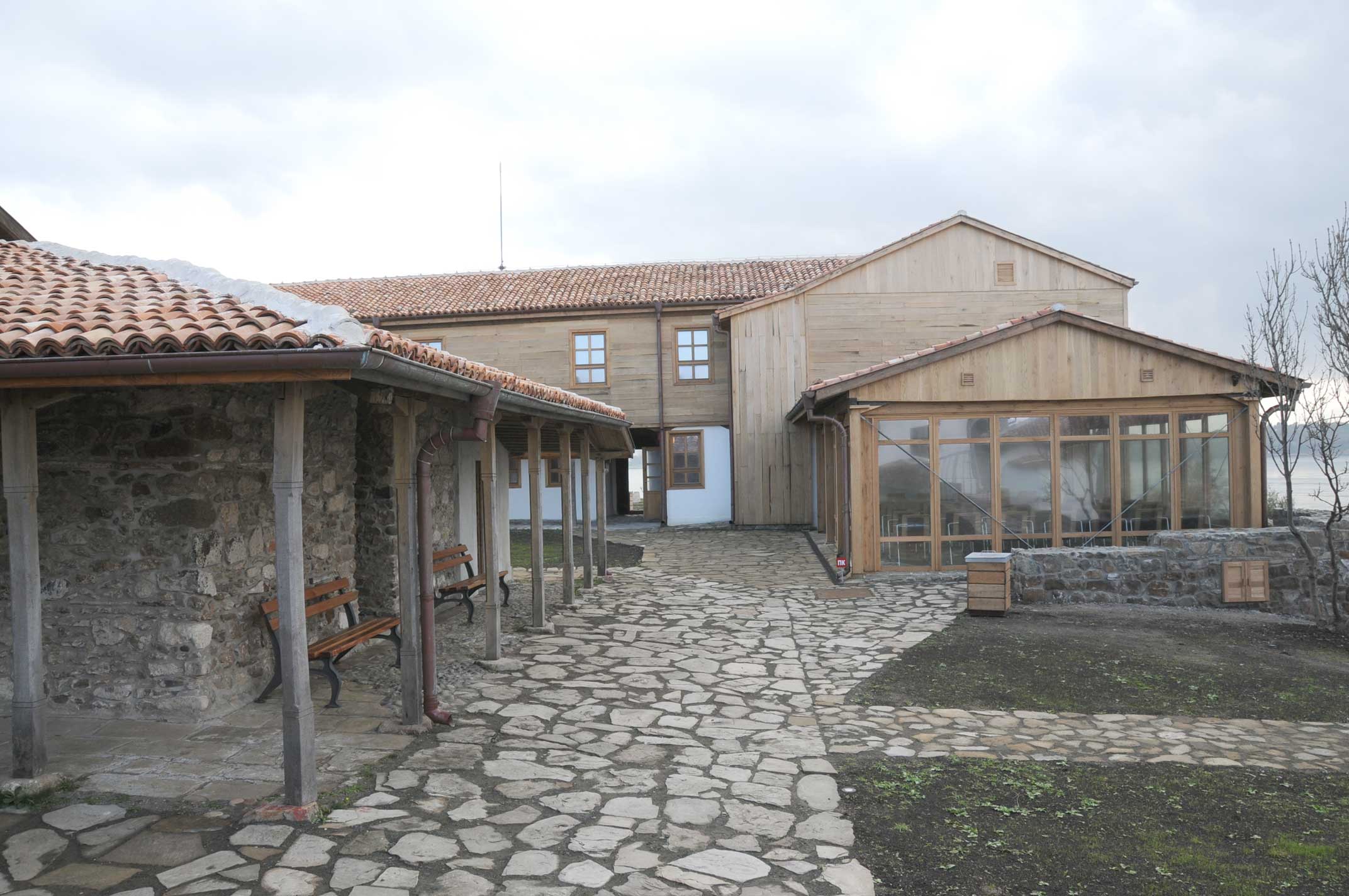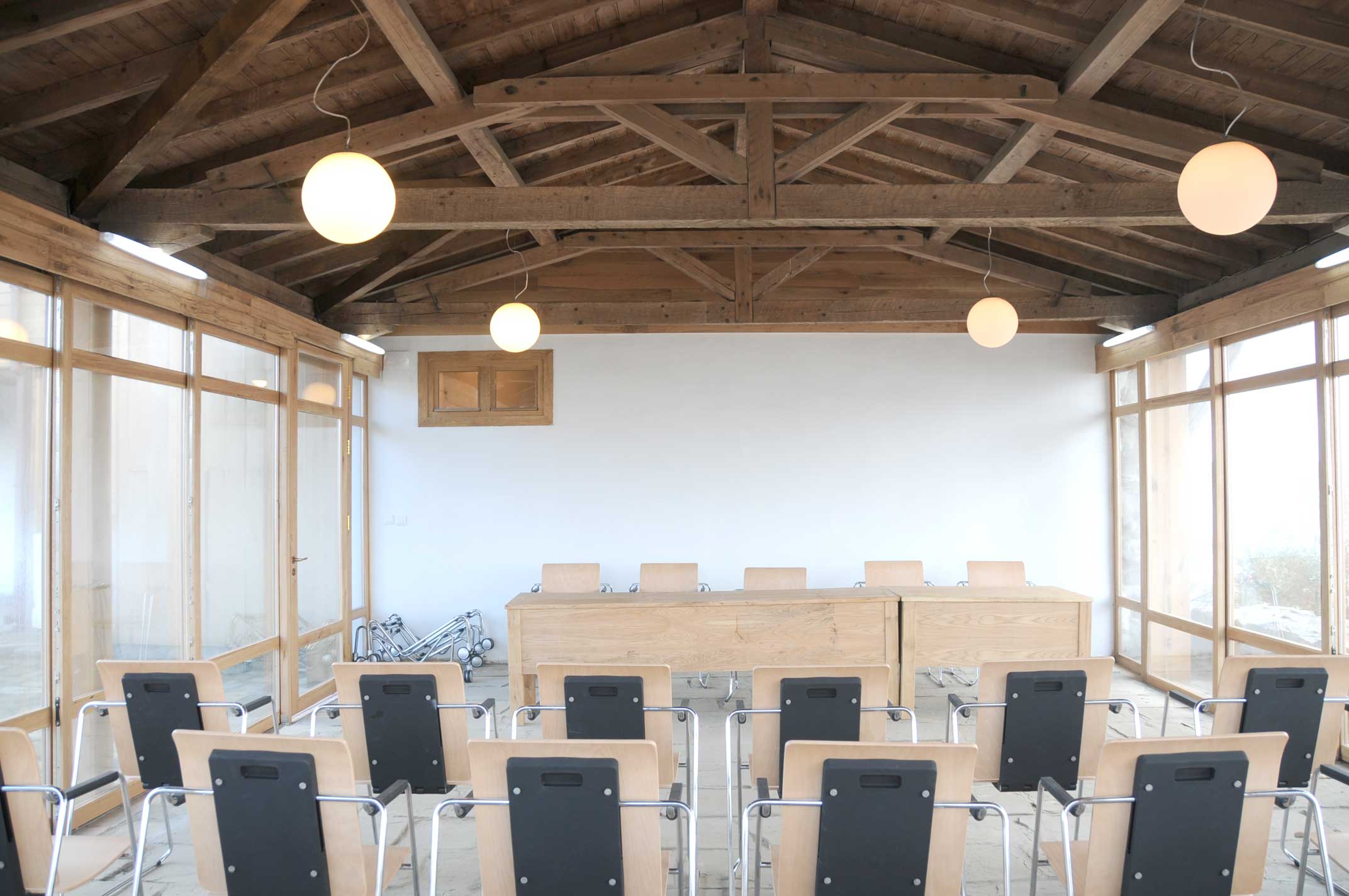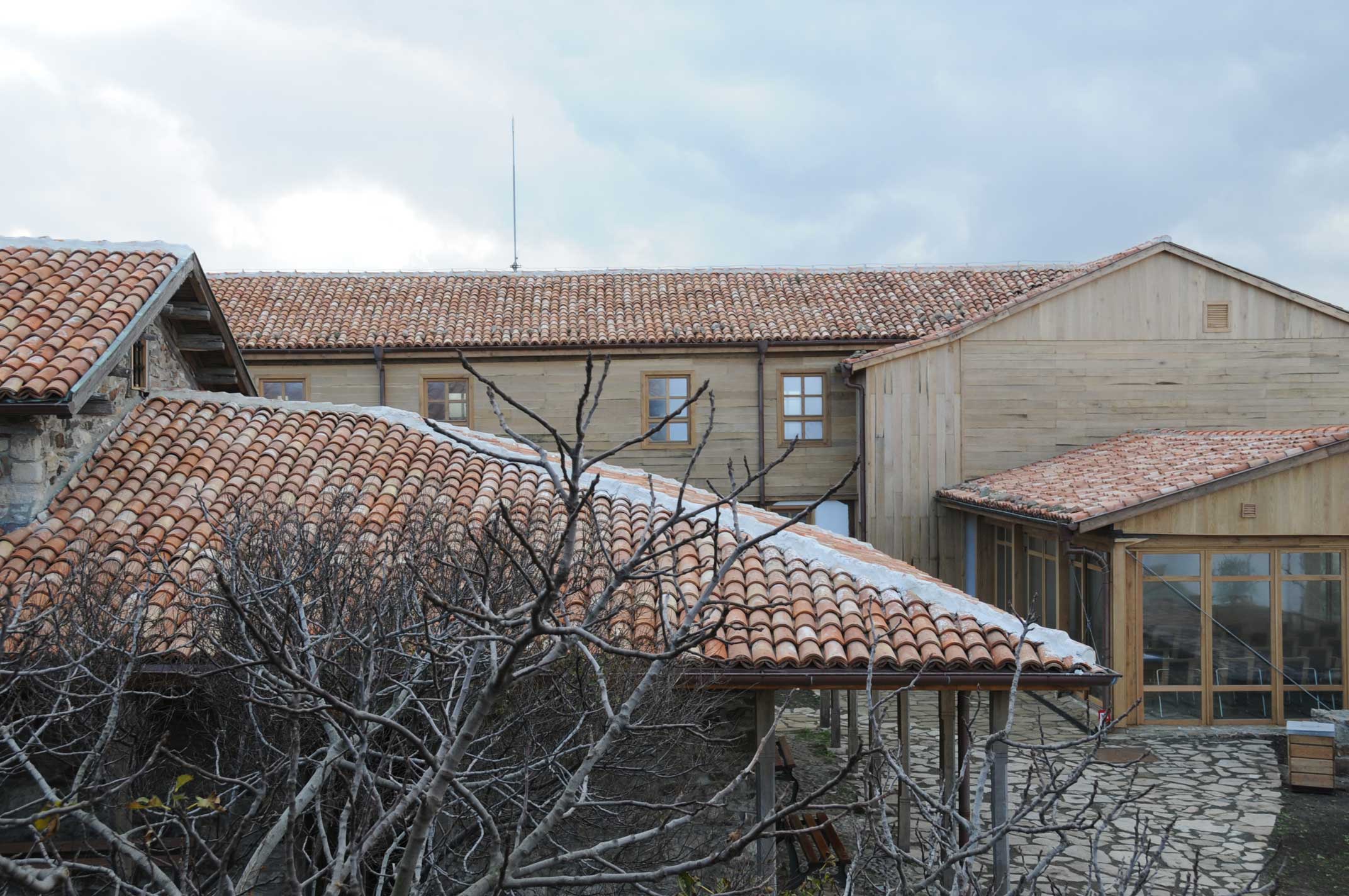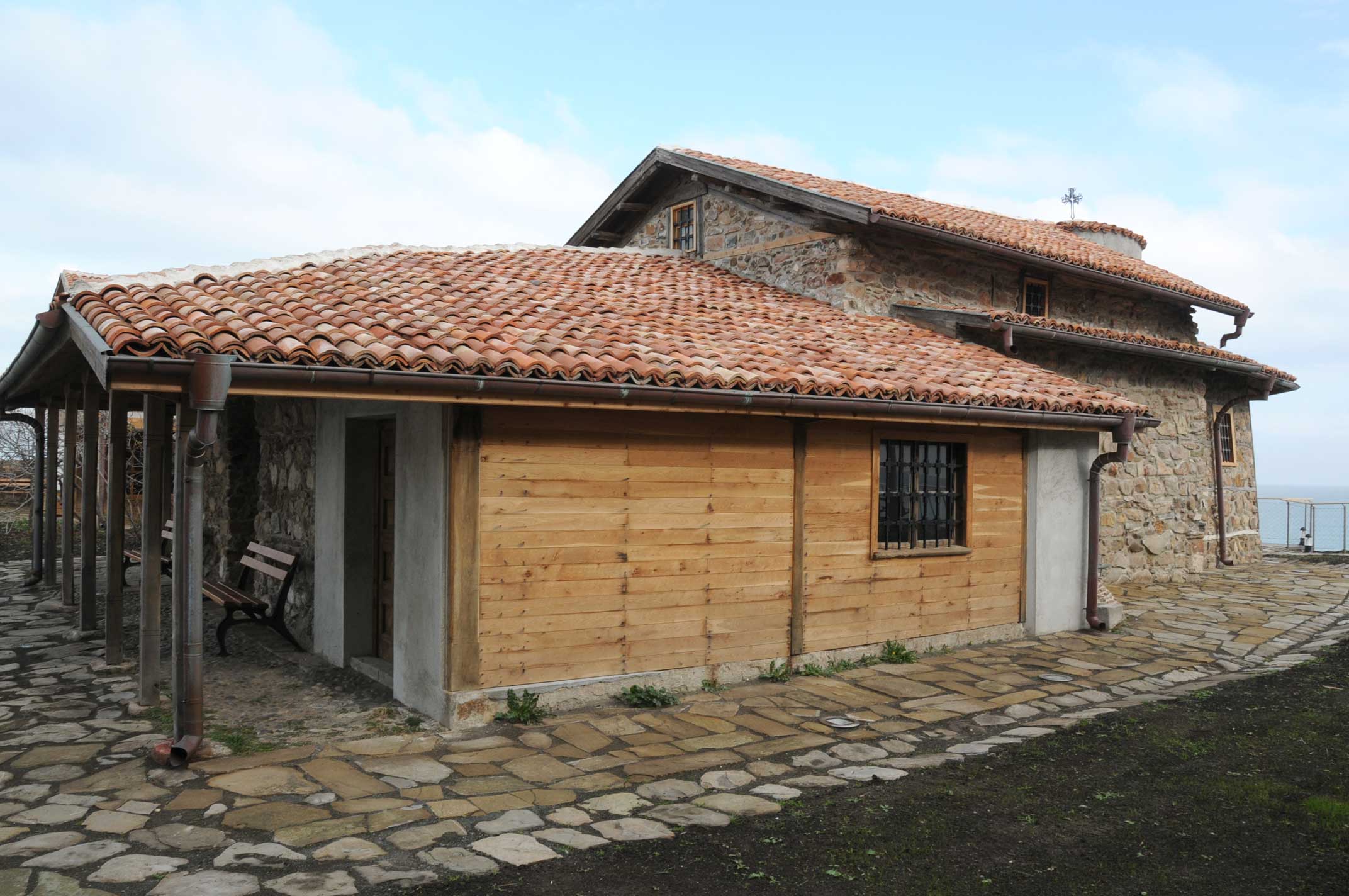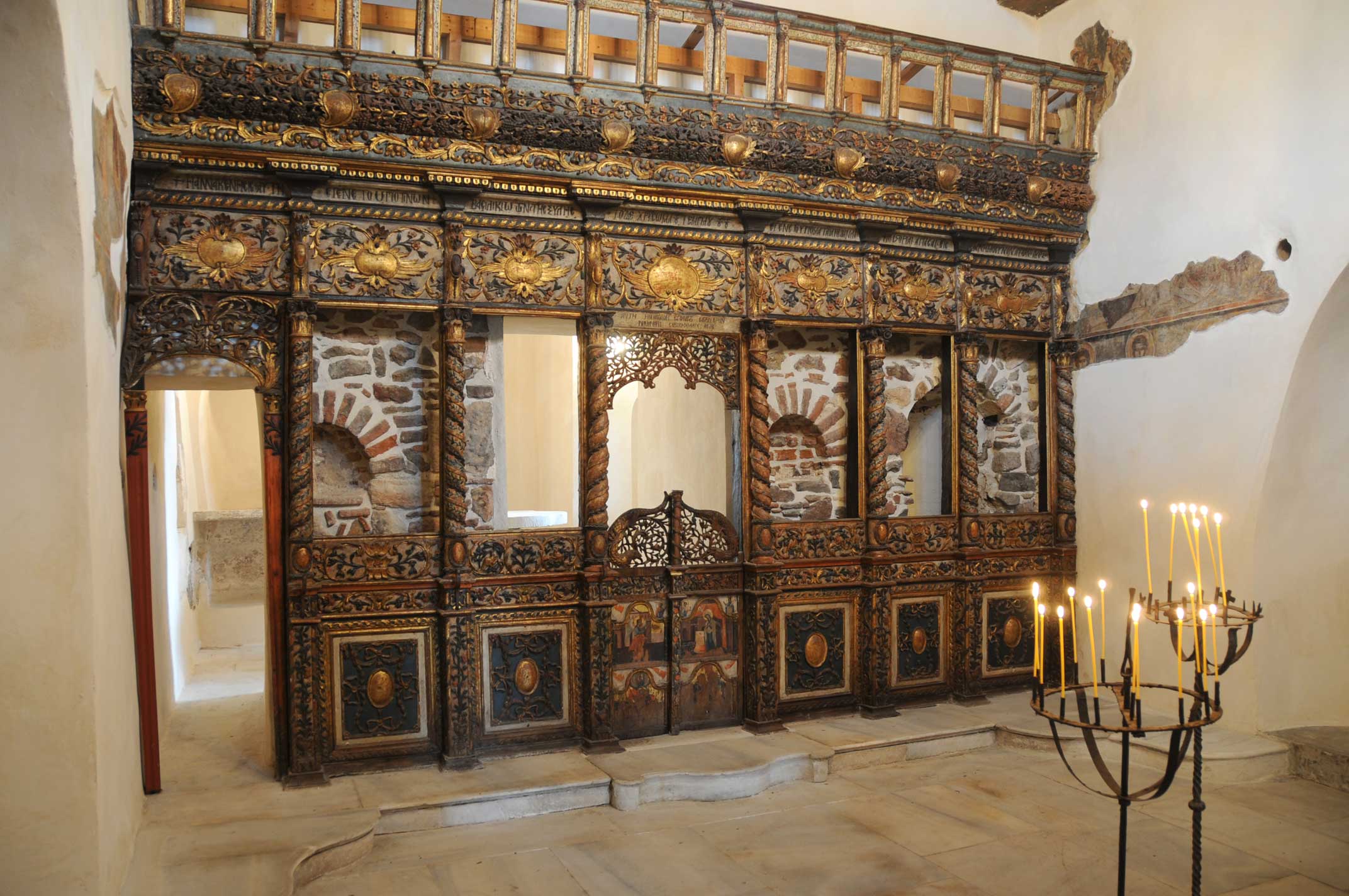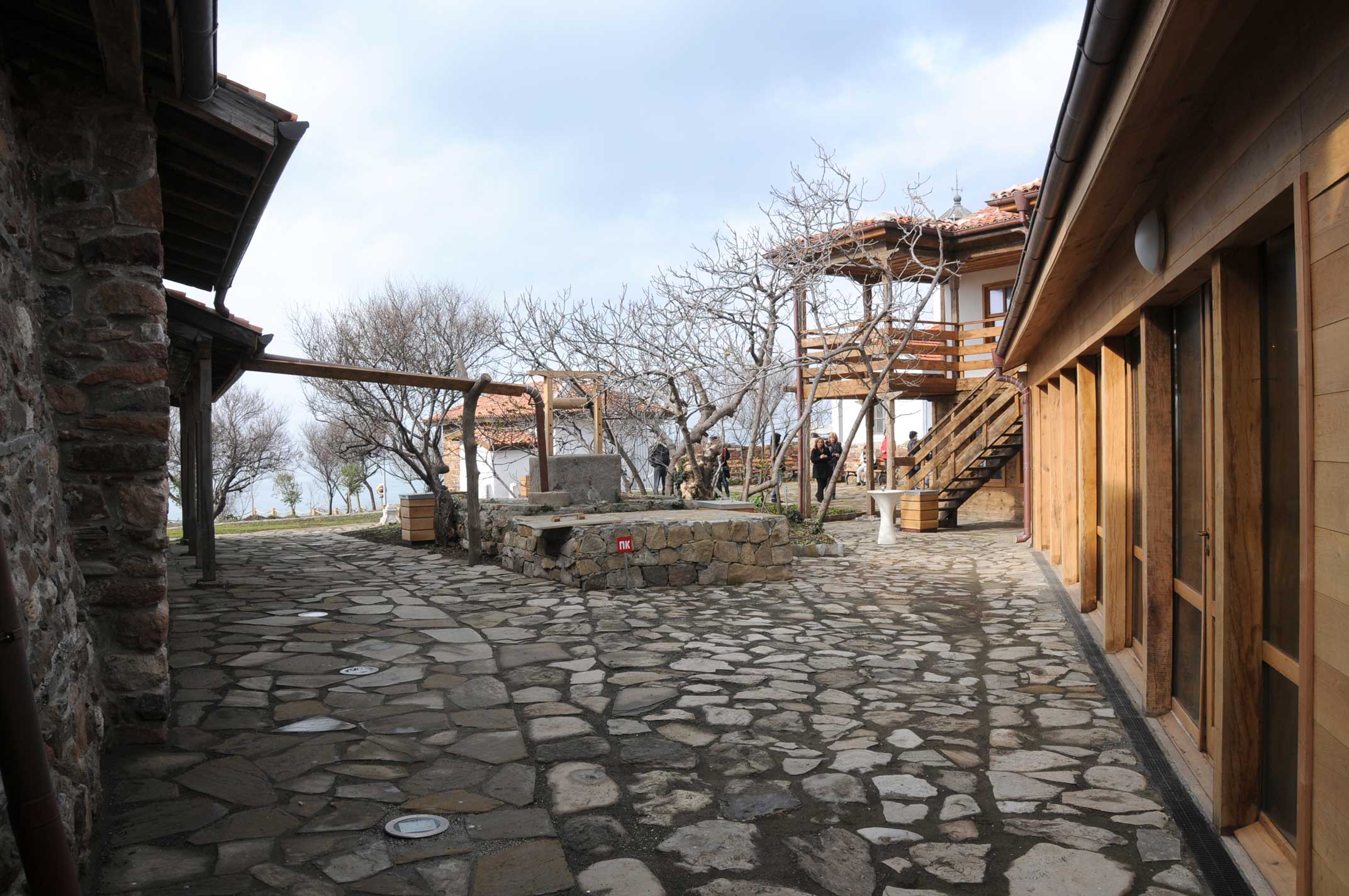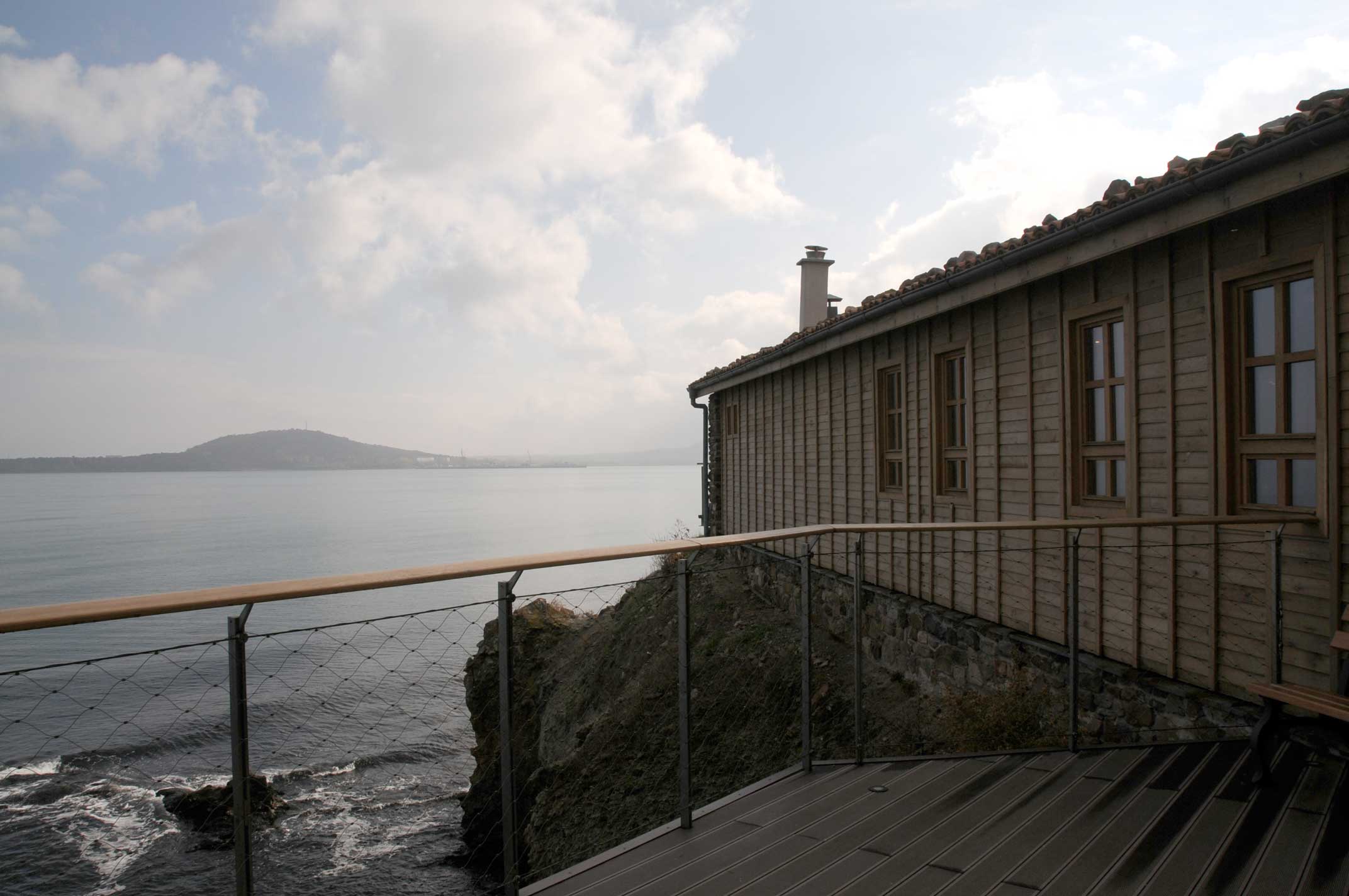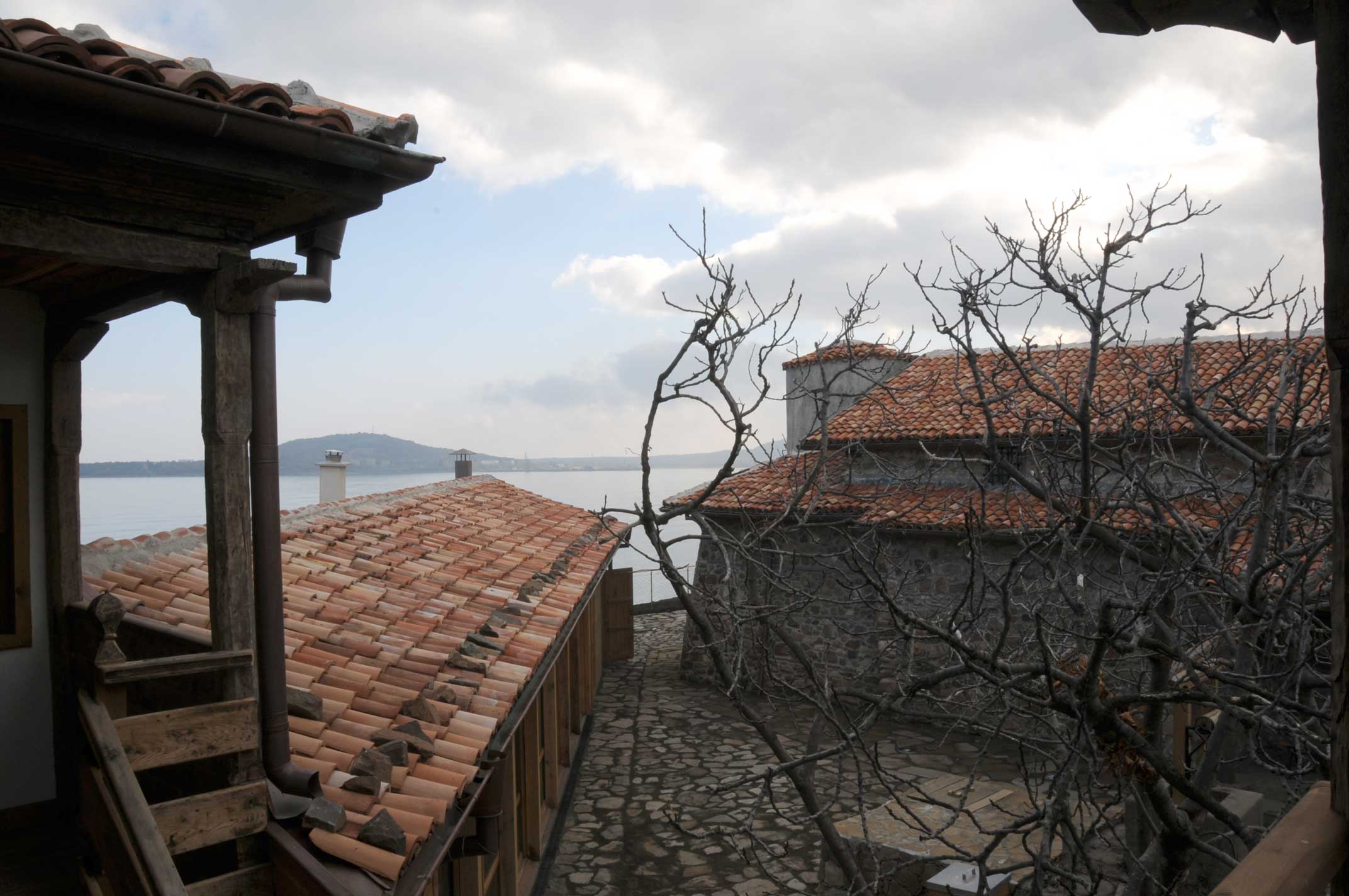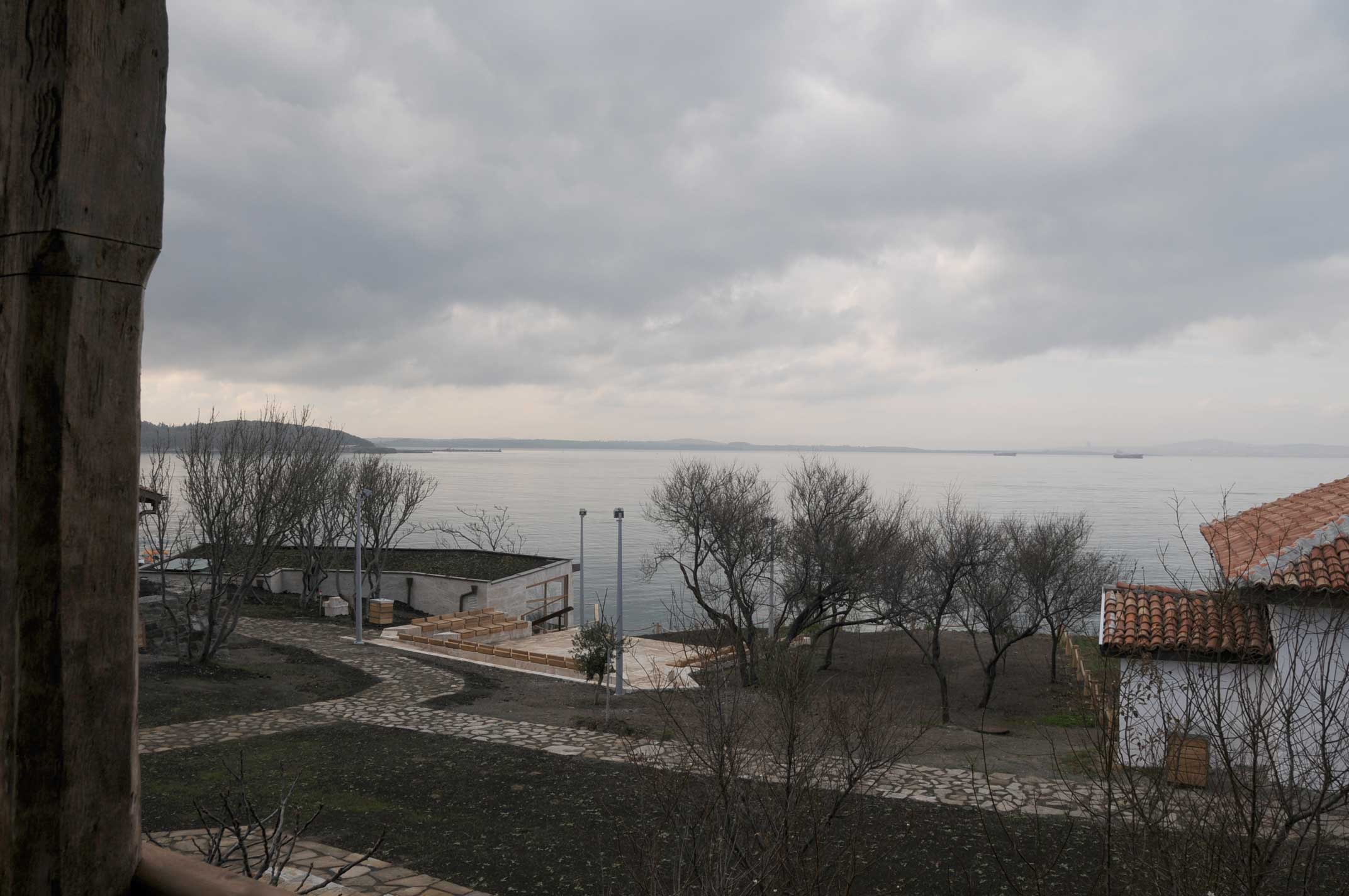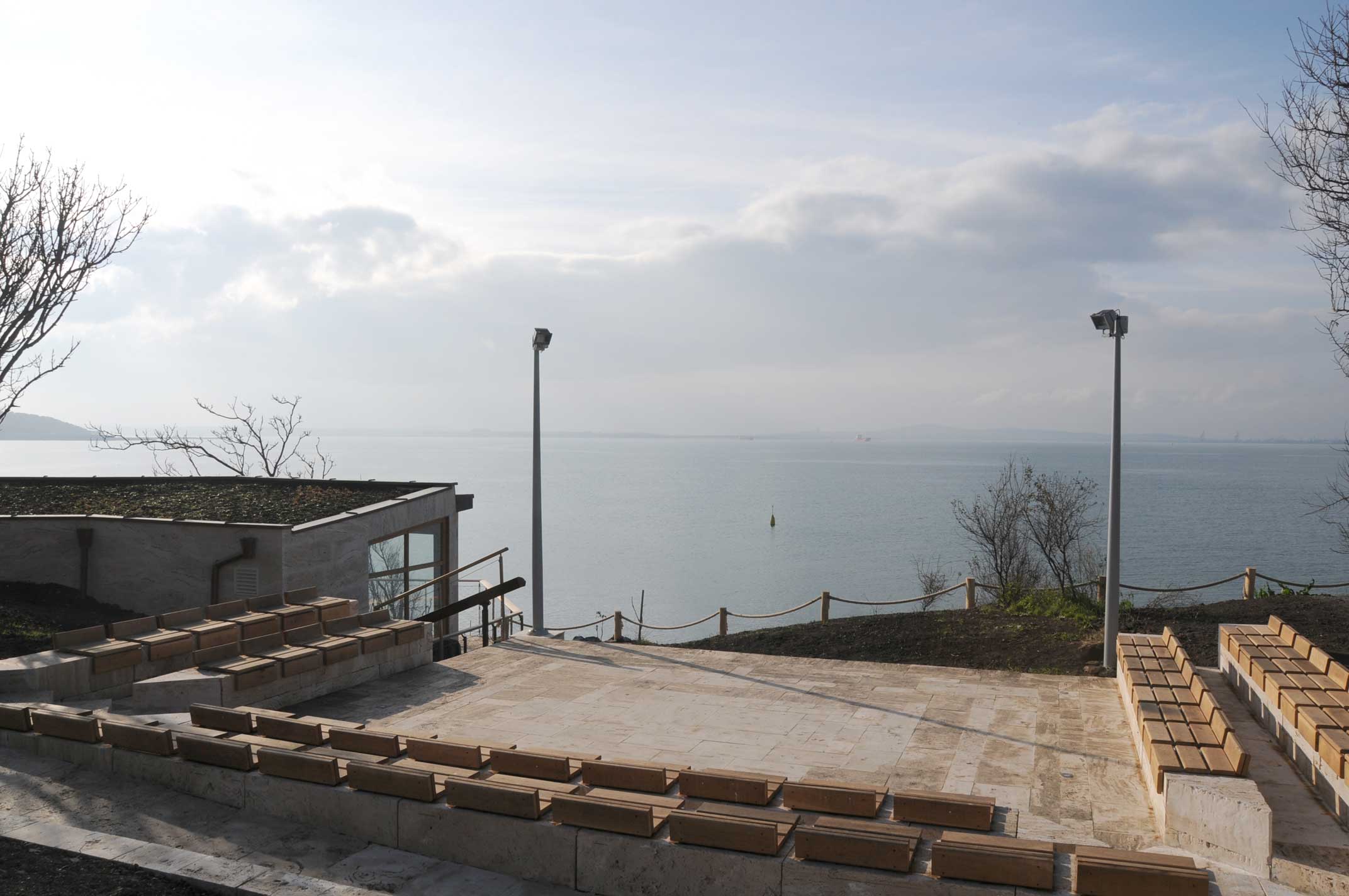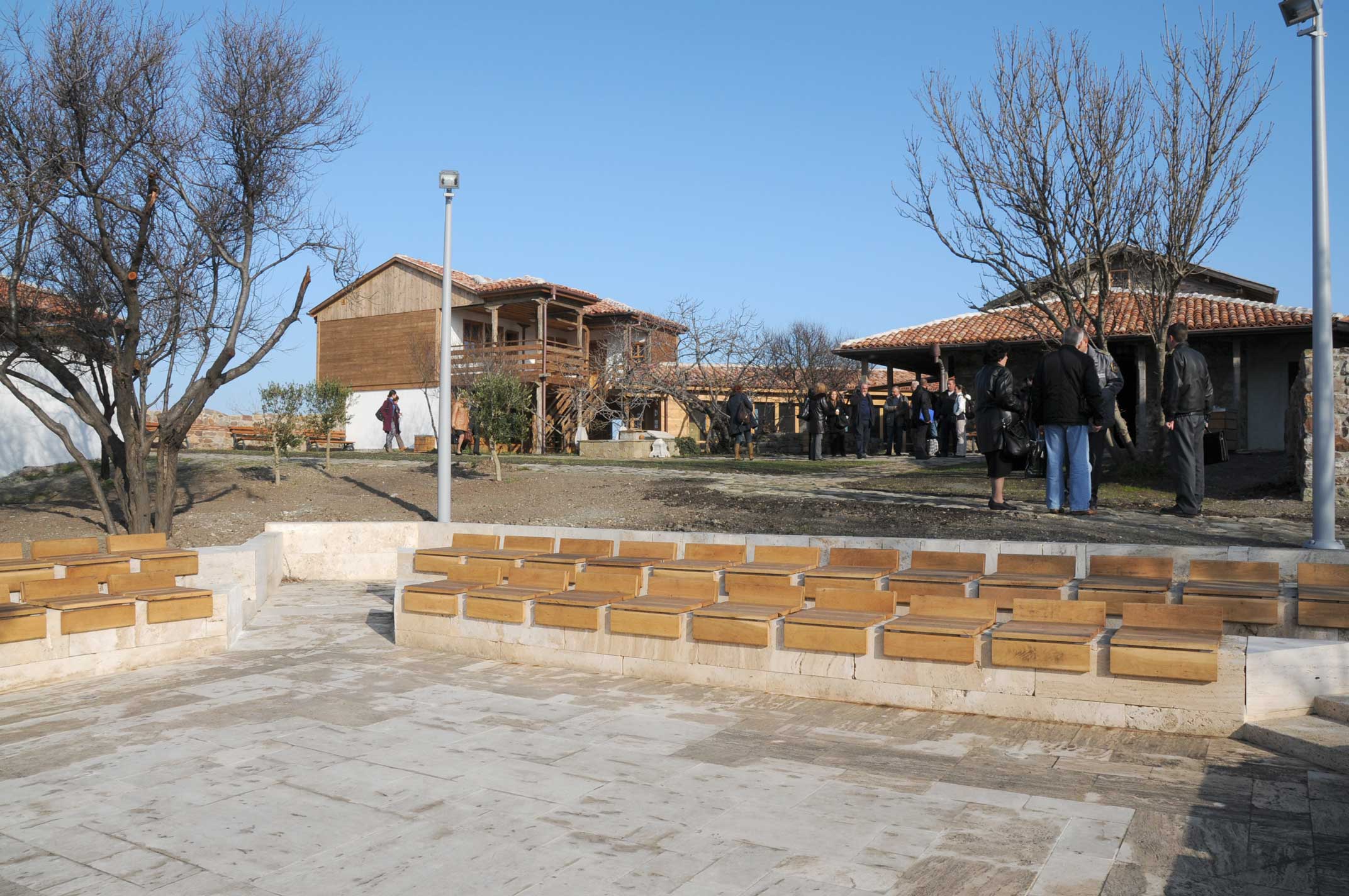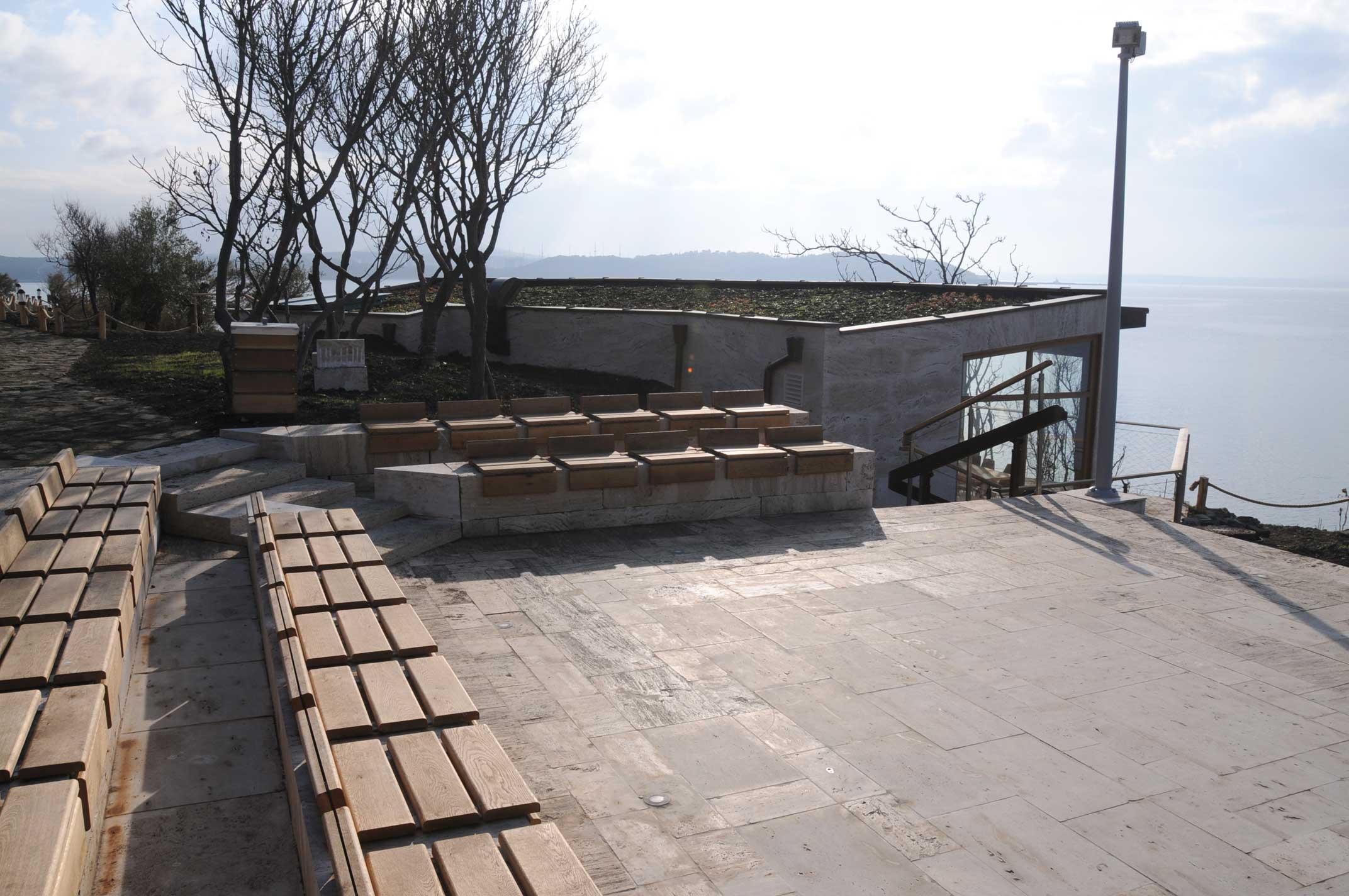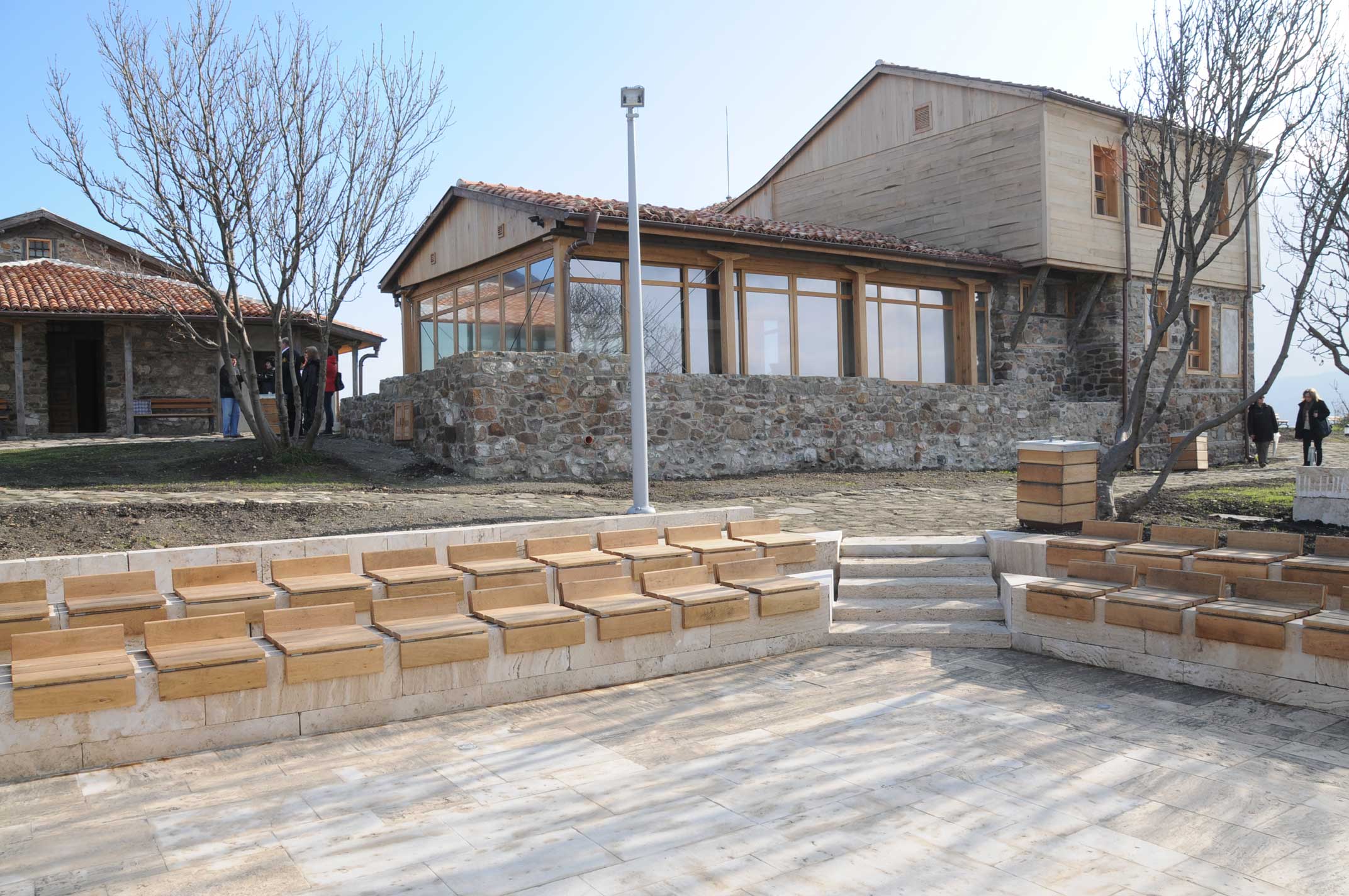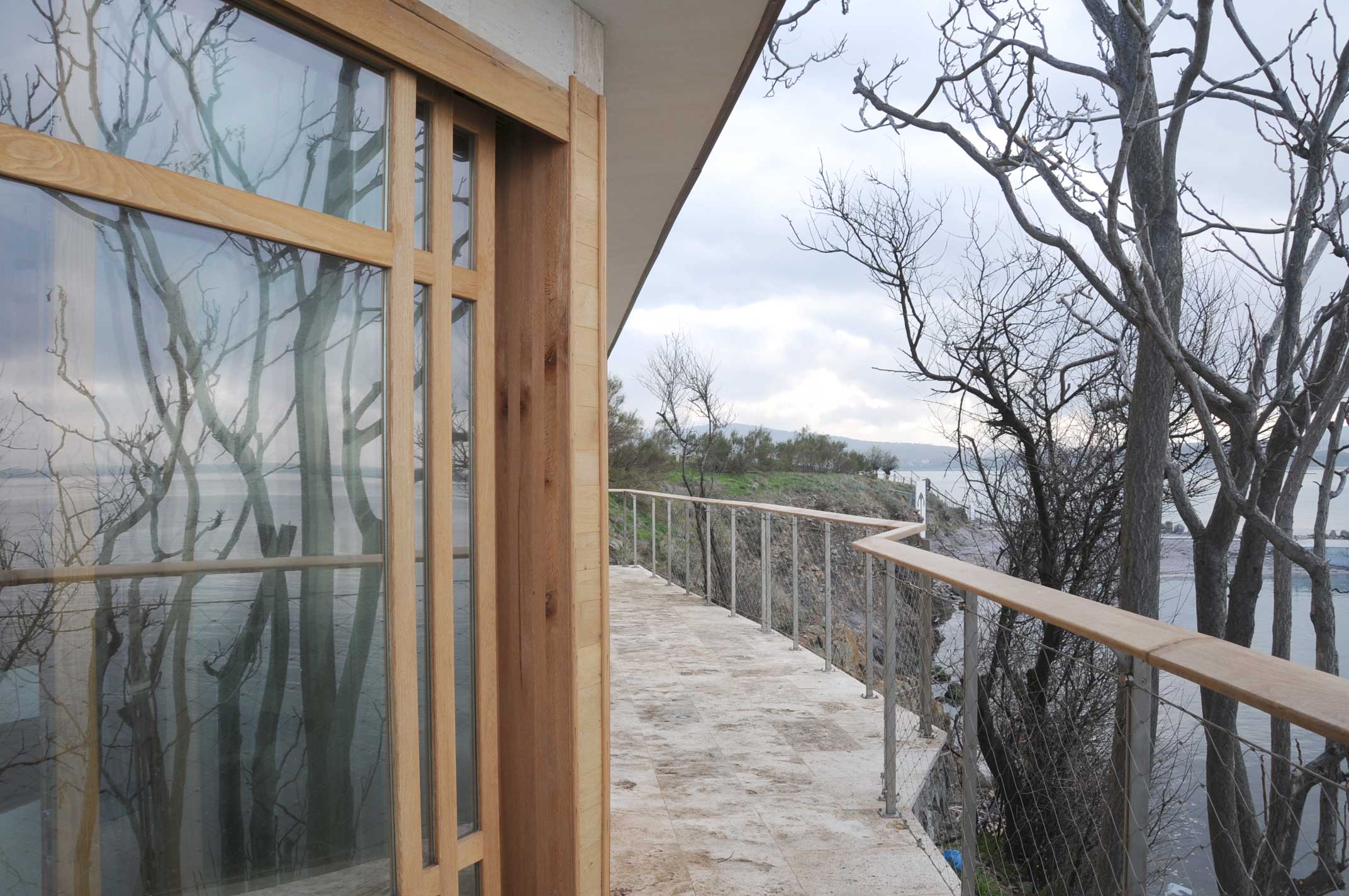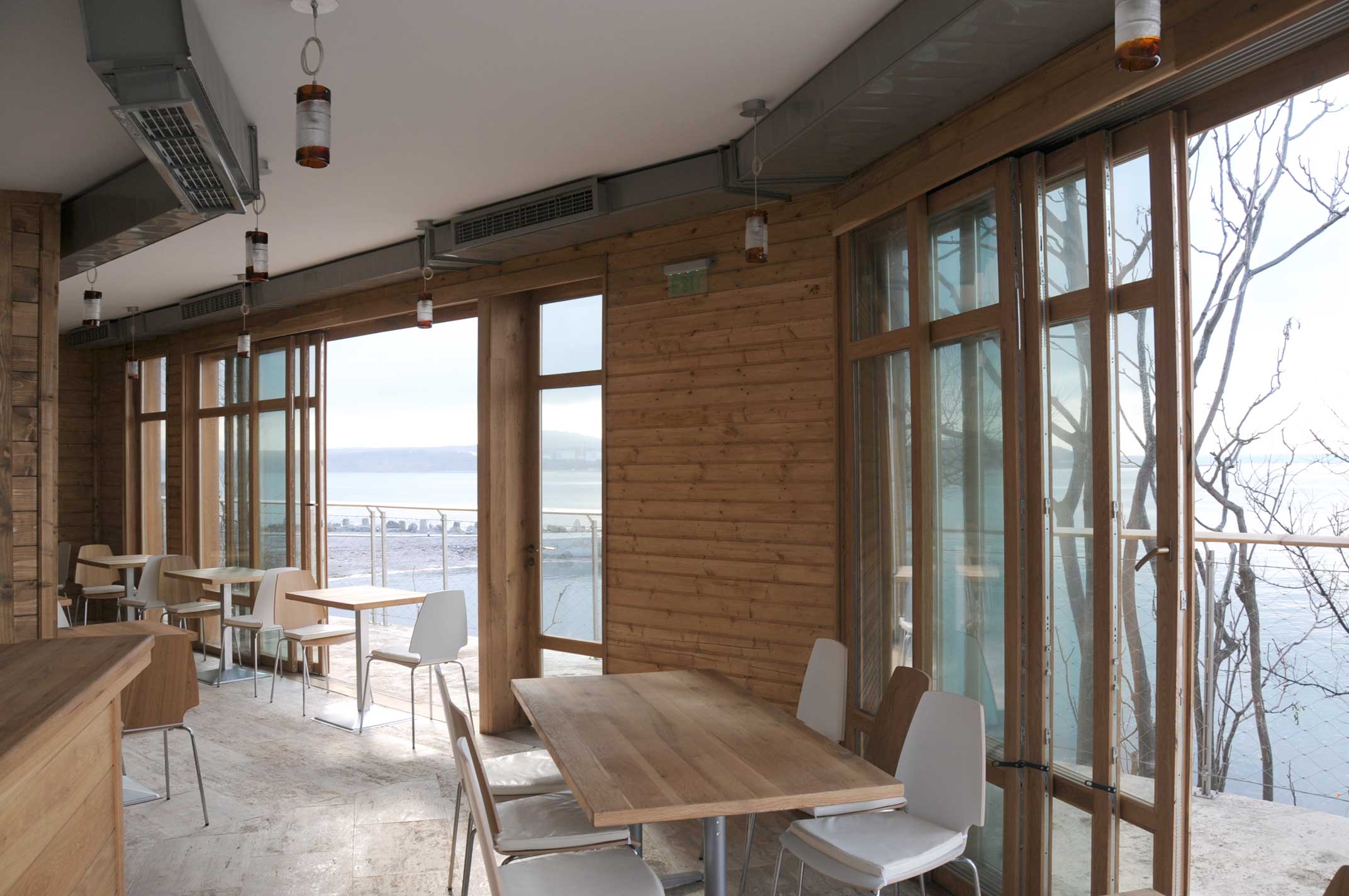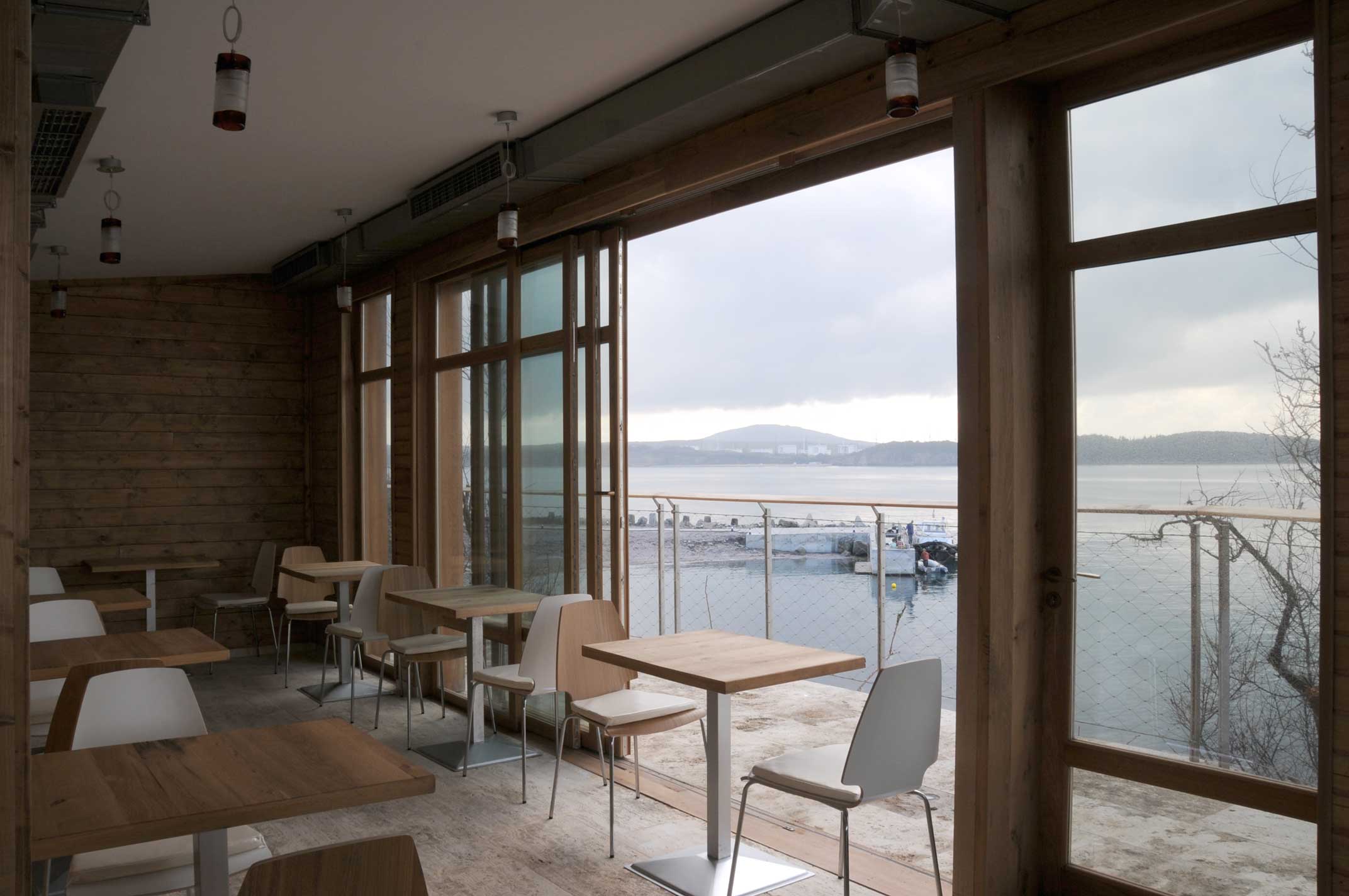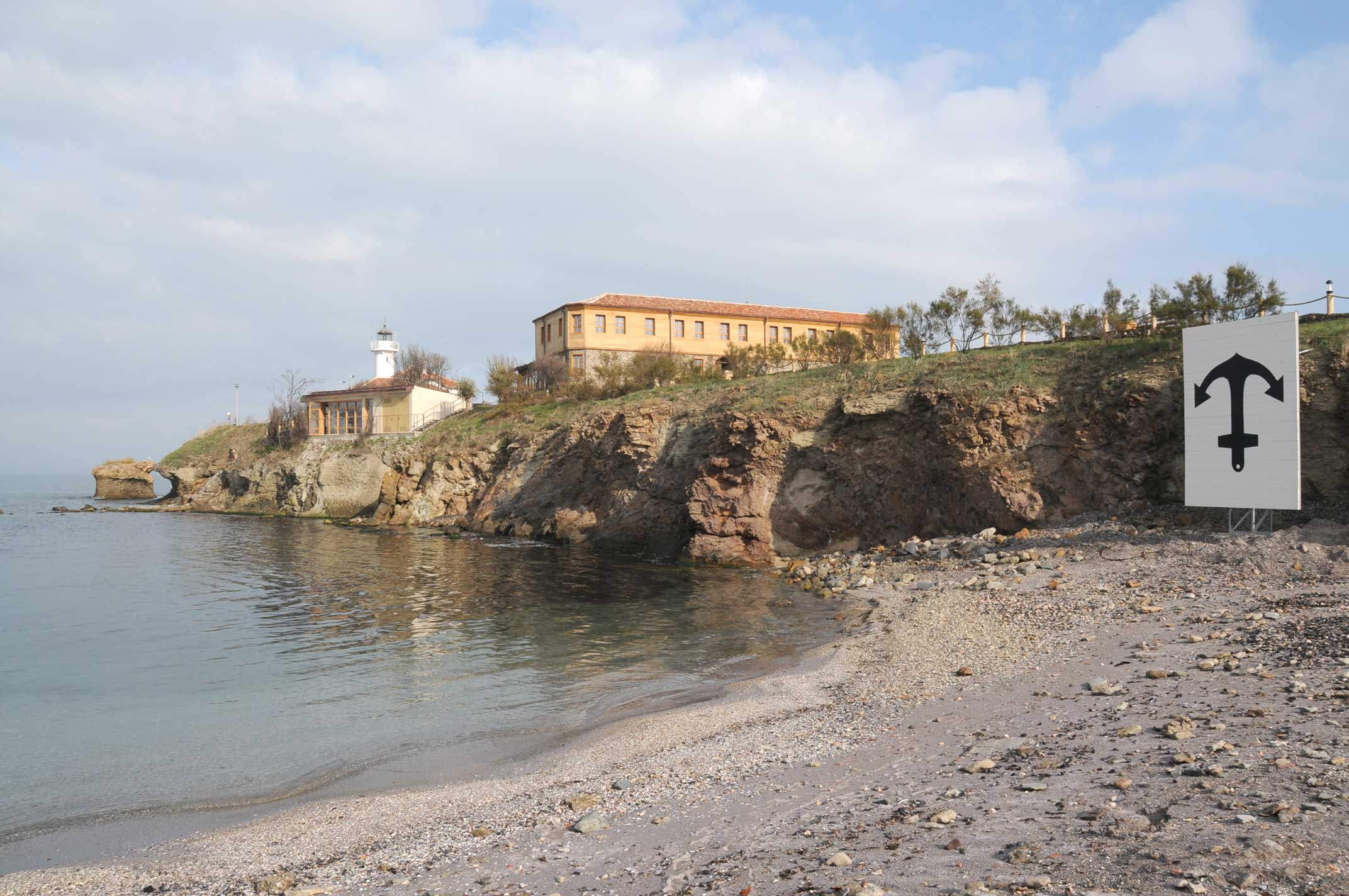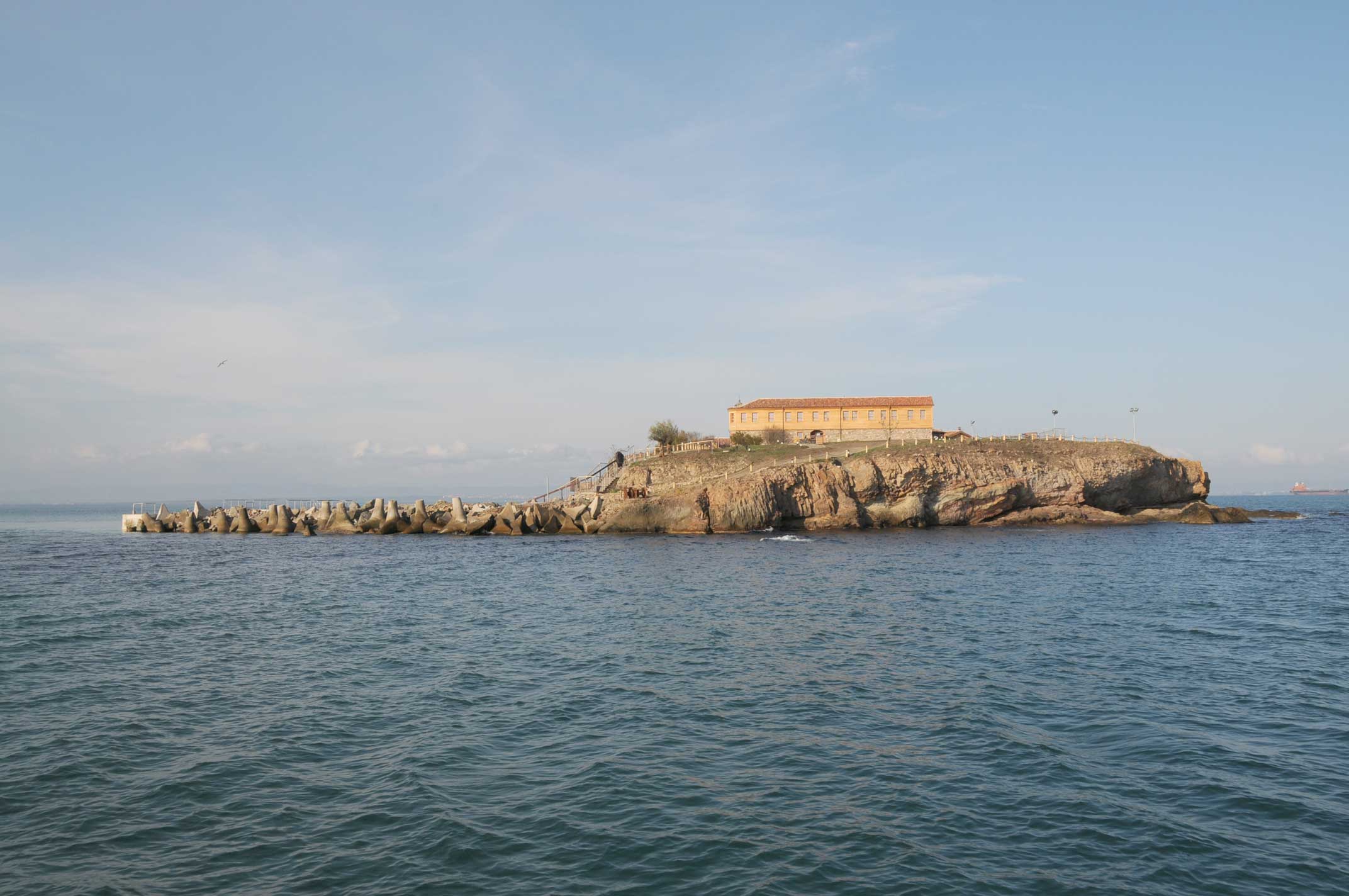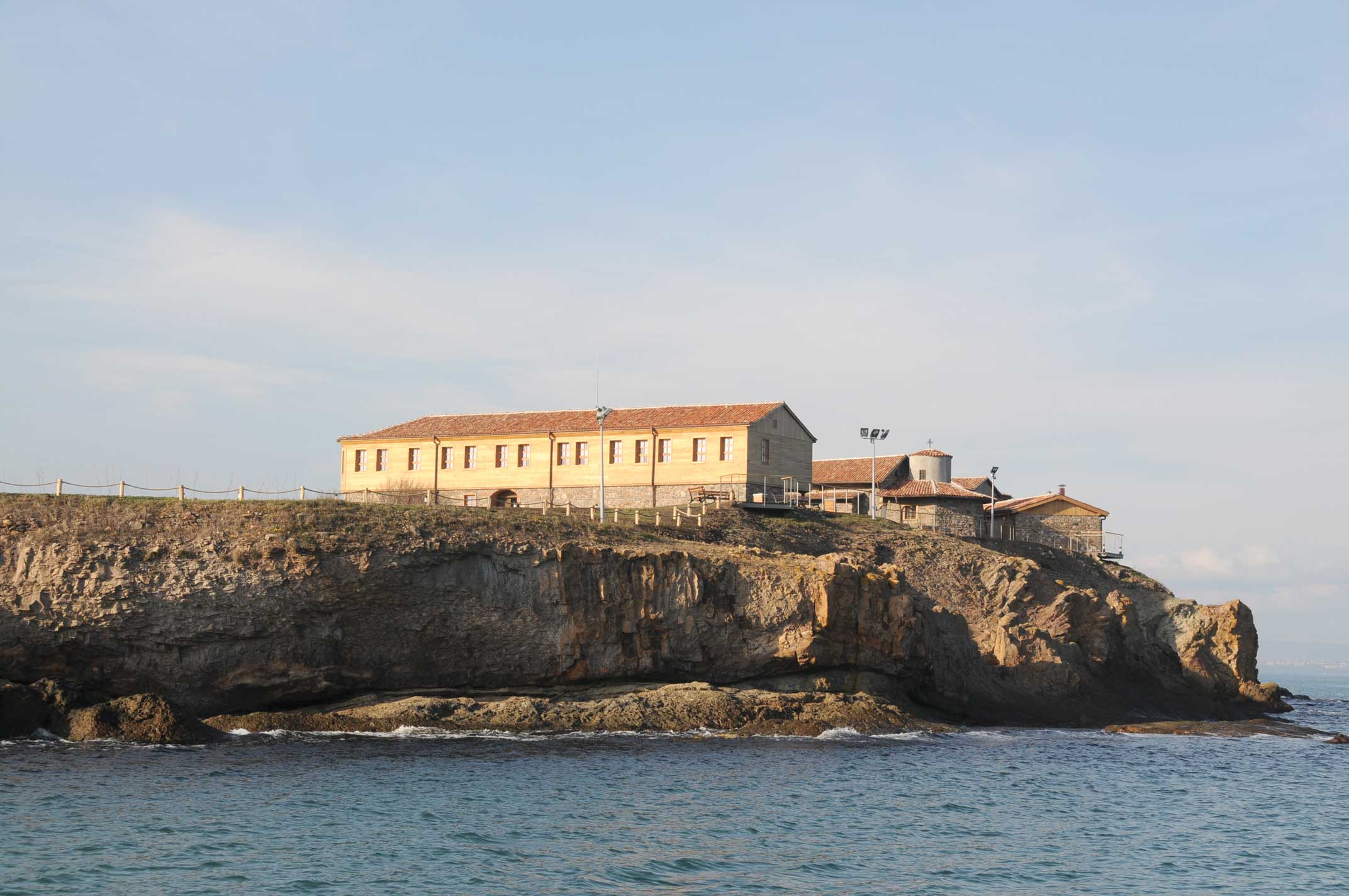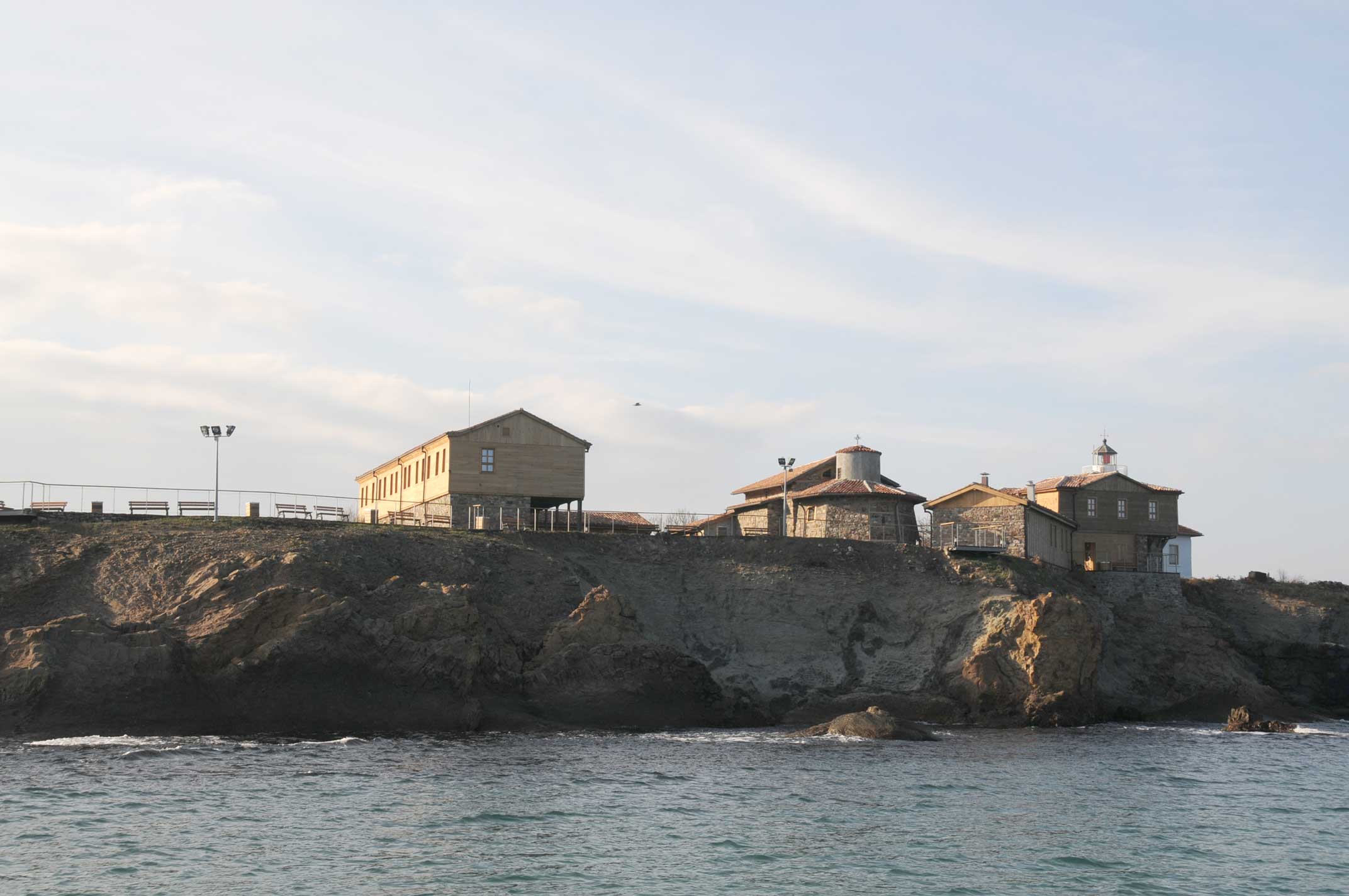St. Anastasia Island
Location:
Saint Anastasia Island is located in the South-East part of Burgas bay about 6km. off shore. The volcanic rock separated form the main land around the end of the Ice age has been shaped through time by storms and the sea. Its elongated shape oriented north-south, reaches 10m height above sea level. The landscape of St. Anastasia is slightly sloping towards the South. In the south-west of the island a small pier assure the access.
History:
A small early Christian monastic cloister was founded on the island probably in the end of VI century. During the IX century was built a monastery, which belonged to the group of the Sozopol Episcopal Church and is subordinate to the main monastery “St. Ivan Krystitel” on the homonymous island near Sozopol. This group of monasteries was autocephalous and until the end of XVII were managed by the Ecumenical Patriarchate. Repeatedly attacked and burned by the Turks in the beginning of XIX century island “Saint Anastasia” was turned into a Turkish fort fortified firing against Russian Navy of Admiral Ushakov. In the beginning of XIX century the monastery’s church was renovated by the patriot hadzhi Matey form Kotelsko. It was consecrated with the name “Uspenie Bogorodichno”. The monastery in charge of the land of the old medieval structure was subordinate by the Patriarch of Constantinople / Ecumenical Patriarchate now. In 1911 after announcing the independence of the Bulgarian Church from the Ecumenical Patriarchate, Bulgaria signed an agreement to exchange the lands of the Bulgarian Exarchate in Thrace and Salonika, for those on Bulgarian territory. Island “Saint Anastasia” becomes a government property. After 1913 the monastery stops functioning, and in 1921 was turned into a prison and it is used as such until 1944. In 1972 a museum exhibition is organized by the Regional museum of Burgas, dedicated to the history of the island and the rebellion of the 43 anti-fascists. A renovation was done on the buildings. By Decision 594 of 06.08.2010 the Ministry of Republic of Bulgaria provides the management over the plot with ID 07079.835.1-island Saint Anastasia to Burgas municipality.
Concept for development of tourist attractions – Island “Saint Anastasia” and tourist route to the Bridge. It’s built on the basis of the extremely rich and diverse resource of the island.
– Explore the separate cultural historic monuments and values, assess their condition and the necessity of measures to be taken for their preservation, friendly adaptation, exhibition, preservation or creating a legacy for future generations. This goal is consistent with the ever-growing needs and demands for authentic, original and unique sight for the contemporary visitor.
– The main guide is “The spirit of the place”. The uniqueness captures each person that sets foot on the Island. Once charmed a visitor looks for new ways to learn more about the religious, cultural, social and artistic past.
Three main levels of knowledge:
– First impressions gained during a boat trip around the island
– A guided tour around the island’s sight on a set route with short stops to look around and to get a short introduction of the monastery buildings, those around it, the rocks sights and the legends written about them.
– The third level of knowledge is connected to the personal interests, knowledge and culture of the visitor.
Levels of knowledge are achieved through the following functions:
Cognitive function:
– Archeology exhibitions
– Museum gatherings: the island’s history, archeological heritage found on the island and in the sea around it, history of Burgas Bay and other Bulgarian islands – reference to similar sites and routes, religious – history exhibition – fragment of a more comprehensive presentation for exhibition of the four islands: Saint Anastasia, Saint Ivan, Saint Kirik and Yulita, and Saint Toma.
– Exhibition of the monastery and the church
– Exhibition of the natural rock phenomena “Dragon”, “Rock ship”, “Entrance” and “Mushroom” – active and passive
– Exhibition of Burgas and the Bay
– Exhibition of the charecteristic for the place flora and fauna.
Mini residence:
A small independent building with three bedrooms could be rented by one or two friend families. There are also several residential unit is type “monk room” for one or two occupants.
Catering function:
Restaurant “100 years back” tailored for 35 pesons with the possibility for tasting food and beverages associated with the monk life – Lekarna
Business activities:
Team building with a short stay, without spending the night. Team building with a longer duration with sleepover: company presentations; temporary exhibitions; projections, workshops; small conferences; company workshops.
Attractions:
Educational, natural phenomena observed from siteseeing points. Group or individual outdoor painting workshops. Amphitheatre site for musical and theatrical events; Artistic lightning and animation; Water fountains with light and music.
Specific functions:
Celebrations of religious holidays and weddings.
Sports attractions:
Beach, swimming, scuba diving, windsurfing, kite surfing, yachting, fishing, mediation, sightseeing, yoga, etc.
Services:
Comfortable environment for people with disabilities; Artistic lightning; System for water retention, recycling and re-using the rain water; Storage and disposal of the garbage; Sewer and water treatment facility; Transport services and access to the island.
The main principles met in the proposal are:
– Maximum preservation and exhibition of the natural values – volcanic island and natural phenomenon’s.
– Maximum preservation of the existing flora and fauna
– Restore and renovate the physical characteristic and look of the existing buildings and facilities
– To explore, preserve and exhibit the authenticity of the buildings – cultural heritage, despite the multiple interventions and renovations.
– The cultural heritage to be adapted and socialized in accordance with the design terms following national and international standards.
Info
- Date : 14.02.2015
